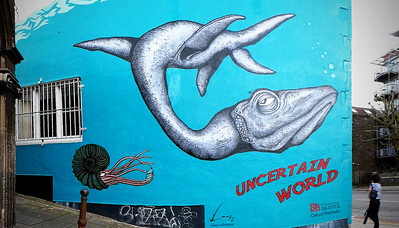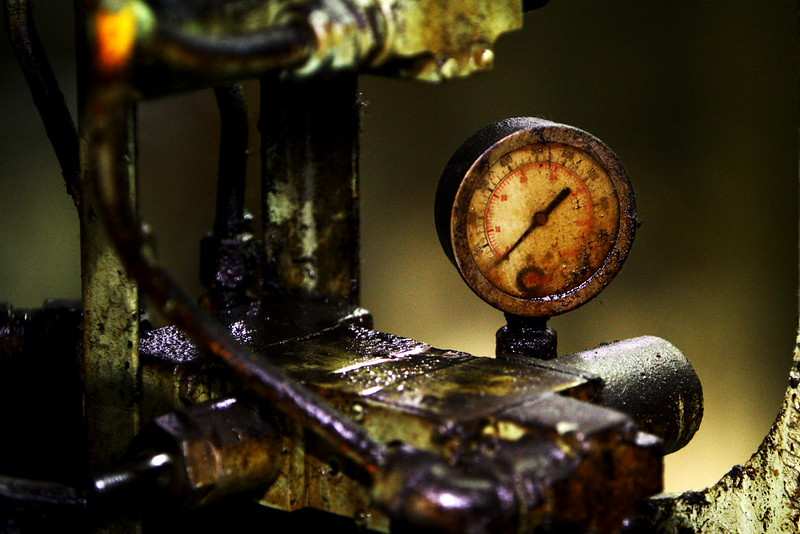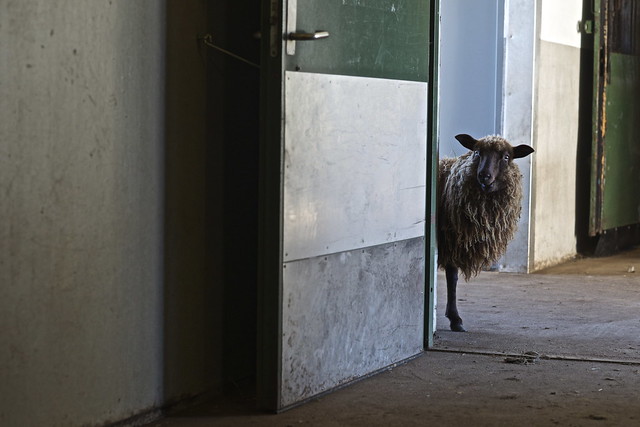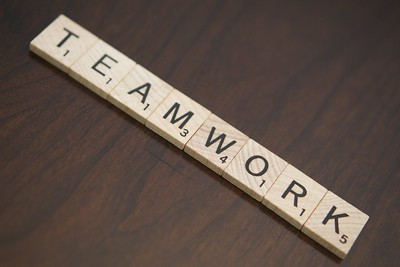Archive for the ‘Decisions’ Category
When You Don’t Know What To Do…
 When you don’t know what to do, what do you do? This is a difficult question.
When you don’t know what to do, what do you do? This is a difficult question.
Here are some thoughts that may help you figure out what to do when you really don’t know.
Don’t confuse activity with progress.
Gather your two best friends, go off-site, and define the system as it is.
Don’t ask everyone what they think because the Collective’s thoughts will be diffuse, bland, and tired.
Get outside.
Draw a picture of how things work today.
Get a good meal.
Make a graph of goodness over time. If it’s still increasing, do more of what you did last time. If it’s flat, do something else.
Get some exercise.
Don’t judge yourself negatively. This is difficult work.
Get some sleep.
Help someone with their problem. The distraction will keep you out of the way as your mind works on it for you.
Spend time with friends.
Try a new idea at the smallest scale. It will likely lead to a better one. Repeat.
Use your best judgment.
Image credit – Andrew Gustar
Things I Sometimes Forget
 Clean-sheet designs are fun, right up until they don’t launch.
Clean-sheet designs are fun, right up until they don’t launch.
When you feel the urge to do a clean-sheet design, go home early.
When you don’t know how to make it better, make it worse and do the opposite.
Without trying, there is no way to know if it will work.
Trying sometimes feels like dying.
But without trying, nothing changes.
Agreement is important, but only after the critical decision has been made.
When there’s 100% agreement, you waited too long to make the decision.
When it’s unclear who the customer is, ask “Whose problem will be solved?”
When the value proposition is unclear, ask ‘What problem will be solved?”
When your technology becomes mature, no one wants to believe it.
When everyone believes the technology is mature, you should have started working on the new technology four years ago.
If your projects are slow, blame your decision-making processes.
Two of the most important decisions: which projects to start and which to stop.
All the action happens at the interfaces, but that’s also where two spans of control come together and chafe.
If you want to understand your silos and why they don’t play nicely together, look at the organizational chart.
When a company starts up, the product sets the organizational structure.
Then, once a company is mature, the organizational structure constrains the product.
At the early stages of a project, there’s a lot of uncertainty.
And once the project is complete, there’s a lot of uncertainty.
“Toys Never Forget” by Alyssa L. Miller is marked with CC BY 2.0.
Trust-Based Disagreement
When there’s disagreement between words and behavior, believe the behavior. This is especially true when the words deny the behavior.
When there’s disagreement between the data and the decision, the data is innocent.
When there’s agreement that there’s insufficient data but a decision must be made, there should be no disagreement that the decision is judgment-based.
When there’s disagreement on the fact that there’s no data to support the decision, that’s a problem.
When there’s disagreement on the path forward, it’s helpful to have agreement on the process to decide.
When there’s disagreement among professionals, there is no place for argument.
When there’s disagreement, there is respect for the individual and a healthy disrespect for the ideas.
When there’s disagreement, the decisions are better.
When there’s disagreement, there’s independent thinking.
When there’s disagreement, there is learning.
When there’s disagreement, there is vulnerability.
When there’s disagreement, there is courage.
When there’s disagreement, there is trust.
“Teamwork” by davis.steve32 is licensed under CC BY 2.0
Learn to Recognize Waiting
If you want to do a task, but you don’t have what you need, that’s waiting for a support resource. If you need a tool, but you don’t have it, you wait for a tool. If you need someone to do the task, but you don’t have anyone, you wait for people. If you need some information to make a decision, but you don’t have it, you wait for information.
If a tool is expensive, usually you have to wait for it. The thinking goes like this – the tool is expensive, so let’s share the cost over too many projects and too many teams. Sure, less work will get done, but when we run the numbers, the tool will look less expensive because it’s used by many people. If you see a long line of people (waiting) or a signup list (people waiting at their desks), what they are waiting for is usually an expensive tool or resource. In that way, to find the cause of waiting, stand at the front of the line and look around. What you see is the cause of the waiting.
If the tool isn’t expensive, buy another one and reduce the waiting. If the tool is expensive, calculate the cost of delay. Cost of delay is commonly used with product development projects. If the project is delayed by a month, the incremental revenue from the product launch is also delayed by a month. That incremental revenue is the cost of delaying the project by a month. When the cost of delay is larger than the cost of an expensive tool, it makes sense to buy another expensive tool. But, to purchase that expensive tool requires multiple levels of approvals. So, the waiting caused by the tool results in waiting for approval for the new tool. I guess there’s a cost of delay for the approval process, but let’s not go there.
Most companies have more projects than people, and that’s why projects wait. And when projects wait, projects are late. Adding people is like getting another expensive tool. They are spread over too many projects, and too little gets done. And like with expensive tools, getting more people doesn’t come easy. New hires can be justified (more waiting in the approval queue), but that takes time to find them, hire them, and train them. Hiring temporary people is a good option, though that can seem too expensive (higher hourly rate), it requires approval, and it takes time to train them. Moving people from one project to another is often the best way because it’s quick and the training requirement is less. But, when one project gains a person, another project loses one. And that’s often the rub.
When it’s time to make an important decision and the team has to wait for missing information, the project waits. And when projects wait, projects are late. It’s difficult to see the waiting caused by missing or uncommunicated information, but it can be done. The easiest to see when the information itself is a project deliverable. If a milestone review requires a formal presentation of the information, the review cannot be held without it. The delay of the milestone review (waiting) is objective evidence of missing information.
Information-based waiting is relatively easy to see when the missing information violates a precedent for decision making. For example, if the decision is always made with a defined set of data or information, and that information is missing, the precedent is violated and everyone knows the decision cannot be made. In this case, everyone’s clear why the decision cannot be made, everyone’s clear on what information is missing, and everyone’s clear on who dropped the ball.
It’s most difficult to recognize information-based waiting when the decision is new or different and requires judgment because there’s no requirement for the data and there’s no precedent to fall back on. If the information was formally requested and linked to the decision, it’s clear the information is missing and the decision will be delayed. But if it’s a new situation and there’s no agreement on what information is required for the decision, it’s almost impossible to discern if the information is missing. In this situation, it comes down to trust in the decision-maker. If you trust the decision-maker and they say there’s information missing, then there’s information missing. If you trust the decision-maker and they say there’s no information missing, they should make the decision. But if you don’t trust the decision-maker, then all bets are off.
In general, waiting is bad. And it’s helpful if you can recognize when projects are waiting. Waiting is especially bad went the delayed task is on the critical path because when the project is waiting on a task that’s on the critical path, there’s a day-for-day slip in the completion date. Hint: it’s important to know which tasks and decisions are on the critical path.
Image credit — Tomasz Baranowski
Uncertainty Isn’t All Bad
 If you think you understand what your customers want, you don’t.
If you think you understand what your customers want, you don’t.
If you’re developing a new product for new customers, you know less.
If you’re developing a new technology for a new product for new customers, you know even less.
If you think you know how much growth a new product will deliver, you don’t.
If that new product will serve new customers, you know less.
If that new product will require a new technology, you know even less.
If you have to choose between project A and B, you’ll choose the one that’s most like what you did last time.
If project A will change the game and B will grow sales by 5%, you’ll play the game you played last time.
If project A and B will serve new customers, you’ll change one of them to serve existing customers and do that one.
If you think you know how the market will respond to a new product, it won’t make much of a difference.
If you don’t know how the market will respond, you may be onto something.
If you don’t know which market the product will serve, there’s a chance to create a whole new one.
If you know how the market will respond, do something else.
When we have a choice between certainty and upside, the choice is certain.
When we choose certainty over upside, we forget that the up-starts will choose differently.
When we have a lot to lose, we chose certainty.
And once it’s lost, we start over and choose uncertainty.
Image credit — Alexandra E Rust
Now that you know your product is bad for the environment, what will you do?
 If your products were bad for the environment, what would you do?
If your products were bad for the environment, what would you do?
If your best products were the worst for the environment, what would you do?
If you knew your products hurt the people that use them, what would you do?
If you knew your sales would be reduced if you told your customers that your products were bad for their health, what would you do?
If you knew a competitive technology was fundamentally less harmful to the environment, what would you do?
If you knew that competitive technology did not hurt the people that use it, what would you do?
If you knew that competitive technology was taking market share from you, what would you do?
If you knew that competitive technology was improving faster than yours, what would you do?
If you knew how to redesign your product to make it better for the environment, but that redesign would reduce the product’s performance in other areas, what would you do?
If that same redesign effort generated patented technology, what would you do?
So, what will you do?
Image credit — Shane Gorski
Will your work make the world a better place?
 As parents, our lives are centered around our children and their needs. In the shortest-term, it’s all about their foundational needs like food, water, and shelter. In the medium-term, it’s all about education and person-to-person interactions. And in the longest-term, it’s all about creating the causes and conditions to help them grow into kind, caring citizens that will do the right things after we’re gone. As parents, our focus on our children gives meaning to our lives.
As parents, our lives are centered around our children and their needs. In the shortest-term, it’s all about their foundational needs like food, water, and shelter. In the medium-term, it’s all about education and person-to-person interactions. And in the longest-term, it’s all about creating the causes and conditions to help them grow into kind, caring citizens that will do the right things after we’re gone. As parents, our focus on our children gives meaning to our lives.
Though work is not the same as our children, what if we took a similar short-medium-long view to our work? And, like with our children, what if we looked at our work as a source of meaning in our lives?
Short-term, our work must pay for our food and our mortgage. And if can’t cover these expenses, the job isn’t viable. In that way, it’s easy to tell if our job works at the month-to-month timescale. You may not know if the job is right for you in the long-term, but you know if it can support your lifestyle month-to-month. And even if it’s a job we love, we know we’ve got to find another job because this one doesn’t support our family.
Medium-term, our work should pay the bills, but it should be more than that. It should allow us to be our best selves and be an avenue for continued growth and development. If you have to pretend to be someone else, you need a new job. And if you’re doing the same thing year-on-year, you need a new job. But, where it’s easy to know that your job doesn’t allow you to pay for your food and rent, it’s more difficult to acknowledge that your job isn’t right because you’ve got to wear a mask and it’s a dead-end job where next year will be the same as last year.
Long-term, our work should pay the bills, should demand we be our best selves, should demand we grow, and should make the world a better place, even after we’re gone. And where it’s difficult to acknowledge you’re in the wrong job because you must wear a mask and do what you did last year, it’s almost impossible to acknowledge you’re in the wrong job because you’re not making the world a better place.
So, I ask you now to stop for a minute and ask yourself some difficult questions. How are you making the world a better place? How are you developing yourself so you can make the world a better place?
How are you growing the future leaders that will make the world a better place?
For many reasons, it’s difficult to allocate your energy in a way that makes the world a better place. But, to me, because the world changes so slowly, the number one reason is that it’s unlikely your work will change the world in your lifetime. But, as a parent, that shouldn’t matter.
As a parent, if your work won’t change the world in your lifetime but will change the world in your children’s lifetime, that’s reason enough to do the right work. And, if your work won’t change the world in your children’s lifetime but will change it in your grandchildren’s lifetime, that is also reason enough to do the right work.
Image credit – Niall Collins
Speed Through Better Decision Making
 If you want to go faster there are three things to focus on: decisions, decisions, and decisions.
If you want to go faster there are three things to focus on: decisions, decisions, and decisions.
First things first – define the decision criteria before the work starts. That’s right – before. This is unnatural and difficult because decision criteria are typically poorly defined, if not undefined, even when the work is almost complete. Don’t believe me? Try to find the agreed-upon decision criteria for an active project. If you can find them, they’ll be ambiguous and incomplete. If you can’t find them, well, there you go.
Decision criteria aren’t just categories -like sales revenue, speed, weight – they all must have a go-no-go threshold. Sales must be greater than X, speed must be greater than Y and weight must be less than Z. A decision criterion is a category with a threshold value.
Second, before the work starts, define the actions you’ll take if the threshold values are achieved and if they are not. If sales are greater than X, speed is greater than Y and weight is less than Z, we’ll invest A dollars a year for B years to scale the business. If one of X, Y or Z are less than their threshold value, we’ll scrap the project and distribute the team throughout the organization.
Lastly, before the work starts, define the decision-maker and how their decision will be documented and communicated. In practice, there is usually just one decision-maker. So, strive to write down just one person’s name as the decision-maker. But that person will be reluctant to sign up as the decision-maker because they don’t want to be mapped the decision if things flop. Instead, the real decision-maker will put together a committee to make the decision.
To tighten things down for the committee, define how the decision will be made. Will it be a simple majority vote, a supermajority, unanimous decision or the purposefully ambiguous consensus vote. My bet is on consensus, which allows the individual committee members to distance themselves from the decision if it goes badly. And, it allows the real decision-maker to influence the consensus and effectively make the decision without making it.
Formalizing the decision process creates speed. The decision categories help the team avoid the wrong work and the threshold values eliminate the time-wasting is-it-good-enough arguments. When the follow-on actions are predefined, there’s no waiting there’s just action. And defining upfront the decision-maker and the mechanism eliminates the time-sucking ambiguity that delays decisions.
What if you were gone for a month?
 If you were out of the office for a month and did not check email or check in, how would things go?
If you were out of the office for a month and did not check email or check in, how would things go?
Your Team – Would your team curl up into a ball under the pressure, or would they use their judgement when things don’t go as planned? I think the answer depends on how you interacted with them over the last year. If you created an environment where it’s a genius and a thousand helpers, they won’t make any decisions because you made it clear that it’s your responsibility to make decisions and it’s their responsibility to listen. But if over the last year you demanded that they use their judgement, they’ll use it when you’re gone. Which would they do? How sure are you? And, how do you feel about that?
Other Teams – Would other teams reach out to your team for help, or would they wait until you get back to ask for help? If they wait it’s because they know you make all the decisions and your team is voice actuated – you talk and they act. But if other teams reach out directly to your team, it’s because over the last years you demonstrated to your team that you expect them to use their good judgement and make good decisions. Would other teams reach out for help or would they wait for you to get back? How do you feel about that?
Your Boss – Would your boss dive into the details of the team’s work or leave the work to the team? I think it depends on whether you were transparent with your boss over the last years about the team’s capability. If in your interactions you took credit for all the good work and blamed your team for the work that went poorly, your boss will dig into the details with your team. Your boss trusts you to do good work and not your team, and since you’re not there, your boss will think the work is in jeopardy and will set up meetings with your team to make sure the work goes well. But if over the last years you gave credit to the team and communicated the strengths and weaknesses of the team, your boss will let the team do the work. Would your boss set up the meetings or leave your team to their work? How sure are you?
To celebrate my son’s graduation from engineering school, I am taking a month off from work to ride motorcycles with him. I’m not sure how it will go with my team, the other teams and my boss, but over the last several years I’ve been getting everyone ready for just this type of thing.
Image credit — Biker Biker
Three Rules for Better Decisions
 The primary responsibility of management is to allocate resources in the way that best achieves business objectives. If there are three or four options to allocate resources, which is the best choice? What is the time horizon for the decision? Is it best to hire more people? Why not partner with a contract resource company? Build a new facility or add to the existing one? No right answers, but all require a decision.
The primary responsibility of management is to allocate resources in the way that best achieves business objectives. If there are three or four options to allocate resources, which is the best choice? What is the time horizon for the decision? Is it best to hire more people? Why not partner with a contract resource company? Build a new facility or add to the existing one? No right answers, but all require a decision.
Rule 1 – Make decisions overtly. All too often, decisions happen slowly over time without knowledge the decision was actually made. A year down the road, we wake up from our daze and realize we’re all aligned with a decision we didn’t know we made. That’s bad for business. Make them overtly and document them.
Rule 2 – Define the decision criteria before it’s time to decide. We all have biases and left to our own, we’ll make the decision that fits with our biases. For example, if we think the project is a good idea, we’ll interpret the project’s achievements through our biased lenses and fund the next phase. To battle this, define the decision criteria months before the funding decision will be made. Think if-then. If the project demonstrates A, then we’ll allocate $50,000 for the next phase; if the project demonstrates A, B and C, then we’ll allocate $100,000; if the project fails to demonstrate A, B or C, then we’ll scrap the project and start a new one. If the decision criteria aren’t predefined, you’ll define them on-the-spot to justify the decision you already wanted to make.
Rule 3 – Define who will decide before it’s time to decide. Will the decision be made by anonymous vote or by a show of hands? Is a simple majority sufficient, or does it require a two-thirds majority? Does it require a consensus? If so, does it have to be unanimous or can there be some disagreement? If there can be disagreement, how many people can disagree? Does the loudest voice decide? Or does the most senior person declare their position and everyone else falls in line like sheep?
Think back to the last time your company made a big decision. Were the decision criteria defined beforehand? Can you go back to the meeting minutes and find how the project performed against the decision criteria? Were the if-then rules defined upfront? If so, did you follow them? And now that you remember how it went last time, do you think you would have made a better decision if the decision criteria and if-thens were in place before the decision? Now, decide how it will go next time.
And for that last big decision, is there a record of how the decision was made? If there was a vote, who voted up and who voted down? If a consensus was reached, who overtly said they agreed to the decision and who dissented? Or did the most senior person declare a consensus when in fact it was a consensus of one? If you can find a record of the decision, what does the record show? And if you can’t find the record, how do you feel about that? Now that you reflected on last time, decide how it will go next time.
It’s scary to think about how we make decisions. But it’s scarier to decide we will make them the same way going forward. It’s time to decide we will put more rigor into our decision making.
Image credit – Michael J & Lesley
Your response is your responsibility.
 If you don’t want to go to work in the morning, there’s a reason. If’ you/re angry with how things go, there’s a reason. And if you you’re sad because of the way that people treat you, there’s a reason. But the reason has nothing to do with your work, how things are going or how people treat you. The reason has everything to do with your ego.
If you don’t want to go to work in the morning, there’s a reason. If’ you/re angry with how things go, there’s a reason. And if you you’re sad because of the way that people treat you, there’s a reason. But the reason has nothing to do with your work, how things are going or how people treat you. The reason has everything to do with your ego.
And your ego has everything to do with what you think of yourself and the identity you attach to yourself. If you don’t want to go to work, it’s because you don’t like what your work says about you or your image of your self. If you are angry with how things go, it’s because how things go says something about you that you don’t like. And if you’re sad about how people treat you, it’s because you think they may be right and you don’t like what that says about you.
The work is not responsible for your dislike of it. How things go is not responsible for your anger. And people that treat you badly are not responsible for your sadness. Your dislike is your responsibility, your anger is your responsibility and your sadness is your responsibility. And that’s because your response is your responsibility.
Don’t blame the work. Instead, look inside to understand how the work cuts against the grain of who you think you are. Don’t blame the things for going as they go. Instead, look inside to understand why those things don’t fit with your self-image. Don’t blame the people for how they treat you. Instead, look inside to understand why you think they may be right.
It’s easy to look outside and assign blame for your response. It’s the work’s fault, it’s the things’ fault, and it’s the people’s fault. But when you take responsibility for your response, when you own it, work gets better, things go better and people treat you better. Put simply, you take away their power to control how you feel and things get better.
And if work doesn’t get better, things don’t go better and people don’t treat you better, not to worry. Their responses are their responsibility.
Image credit Mrs. Gemstone


 Mike Shipulski
Mike Shipulski